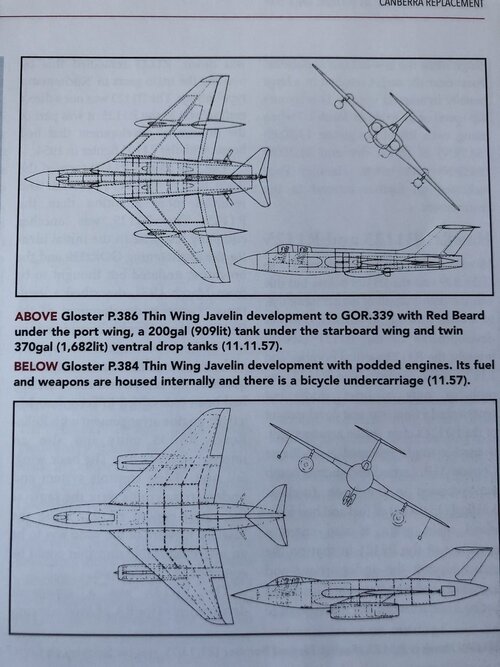- Joined
- 27 May 2008
- Messages
- 1,178
- Reaction score
- 2,483
Main problem with the Javelin as a Missileer + Red Dean / Red Hebe: drag, drag, and more drag. The missiles were enormous (and draggy) and so was the Javelin.
A pity, because the combination might have been an intriguing alternative to F.155T: starting from Thin Wing Javelin last iterations: such as the P.376 with Olympus.
What is really fascinating is to compare Thin Wing Javelin with Arrow and Fairey F.155T winner. Also by 1956 the RAF hesitated between the three, drawing comparisons between them.
The Arrow was not good enough for F.155T but still buried any TW Javelin, even P.376. Main issue was that Red Dean / Red Hebe would not fit inside the weapon bay.
Another interesting aspect was that the Arrow's Sparrow II were ARH - active radar homing... just like Red Dean and Red Hebe. This amounted to building an AMRAAM with 1950's technology - and that was hopeless.
The Hawker Siddley Group (HSG) found themselves in a difficult position in 1956 as two of their contracted full scale development projects (TWJ and Arrow) were rejected by their U.K. customer, who launched a new full scale development contract for what they thought they wanted with another Vendor I.e Fairy 155T . HSG responded by proposing P376, and indeed privately funding to full size mock up. P376 really was HSG take on what the customer wanted as a suggestion to salvage something out of what they had already paid for with the TWJ (P354). P376 didn’t exist when F155T was in the bid stage, I wonder why? About the same time Gloster P376 emerged, Hawker Kingston P1103 went to 1116 to 1121 and became the companies preferred private venture funded project.
To me the real opportunity missed here was a single ambitious offering that could have satisfied both Canadian and U.K. requirements in airframe, systems and missiles.
Last edited:


